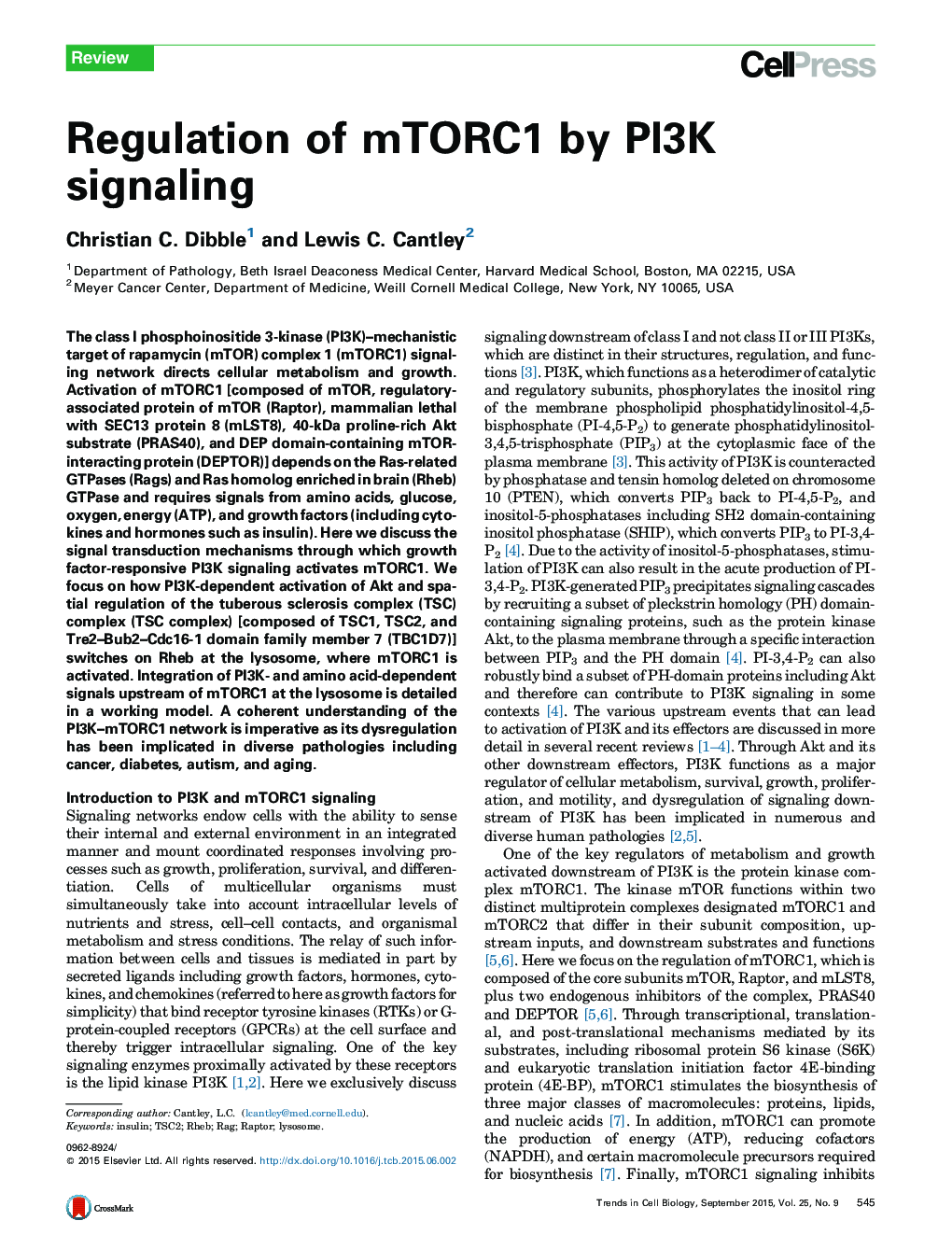| Article ID | Journal | Published Year | Pages | File Type |
|---|---|---|---|---|
| 2204365 | Trends in Cell Biology | 2015 | 11 Pages |
•mTORC1 activity requires the Rag and Rheb GTPases and signals from amino acids and growth factors.•Growth factor-stimulated PI3K–Akt signaling activates Rheb and mTORC1 at the lysosome.•Amino acid signaling promotes mTORC1–Rheb colocalization at the lysosome.•Akt activates Rheb by inducing dissociation of its GAP, the TSC complex, from the lysosome.
The class I phosphoinositide 3-kinase (PI3K)–mechanistic target of rapamycin (mTOR) complex 1 (mTORC1) signaling network directs cellular metabolism and growth. Activation of mTORC1 [composed of mTOR, regulatory-associated protein of mTOR (Raptor), mammalian lethal with SEC13 protein 8 (mLST8), 40-kDa proline-rich Akt substrate (PRAS40), and DEP domain-containing mTOR-interacting protein (DEPTOR)] depends on the Ras-related GTPases (Rags) and Ras homolog enriched in brain (Rheb) GTPase and requires signals from amino acids, glucose, oxygen, energy (ATP), and growth factors (including cytokines and hormones such as insulin). Here we discuss the signal transduction mechanisms through which growth factor-responsive PI3K signaling activates mTORC1. We focus on how PI3K-dependent activation of Akt and spatial regulation of the tuberous sclerosis complex (TSC) complex (TSC complex) [composed of TSC1, TSC2, and Tre2–Bub2–Cdc16-1 domain family member 7 (TBC1D7)] switches on Rheb at the lysosome, where mTORC1 is activated. Integration of PI3K- and amino acid-dependent signals upstream of mTORC1 at the lysosome is detailed in a working model. A coherent understanding of the PI3K–mTORC1 network is imperative as its dysregulation has been implicated in diverse pathologies including cancer, diabetes, autism, and aging.
